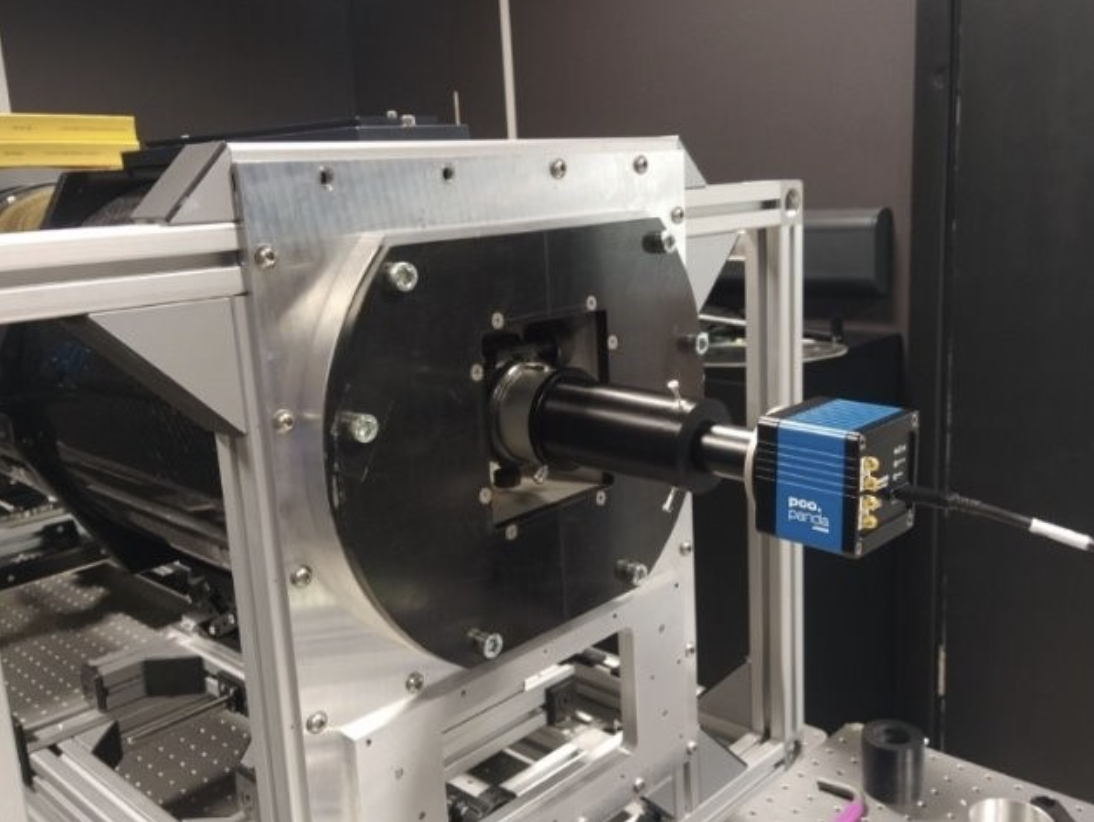

The NRT will perform fast follow-up observations of transients in the new era of multi-wavelength synoptic surveys. The telescope design specification allows an operable wavelength range of 300 – 2400 nm, while delivering an image quality not exceeding site seeing + 0.2 arcseconds in terms of 80% diffracted encircled energy. The time-to-target requirement following an alert is 30 seconds and as such the instrumentation should allow the object to fall onto the detector FOV within the blind pointing accuracy of the telescope (10”x10”; 99.9% of the time minimum).
The instrumentation for the NRT will be stable, efficient and cater to the needs of the time-domain community. Light from astronomical sources can be probed in six dimensions: through two polarisation states, temporally, with respect to wavelength dependence, and intensity in the two spatial directions as projected on the sky. A complex modern instrument may probe all dimensions, however these require large amounts of optics and tend to lead to poor overall instrument throughput. Such a combined instrument would not fit into the instrument envelope proposed for the NRT. Hence, imaging, spectroscopy and polarimetric measurement systems have been designed independently. Based on an analysis of the science case we are proposing a two generation instrumentation plan for the NRT, with the possibility of including a wide-field imager in addition to the proposed first and second generations below.
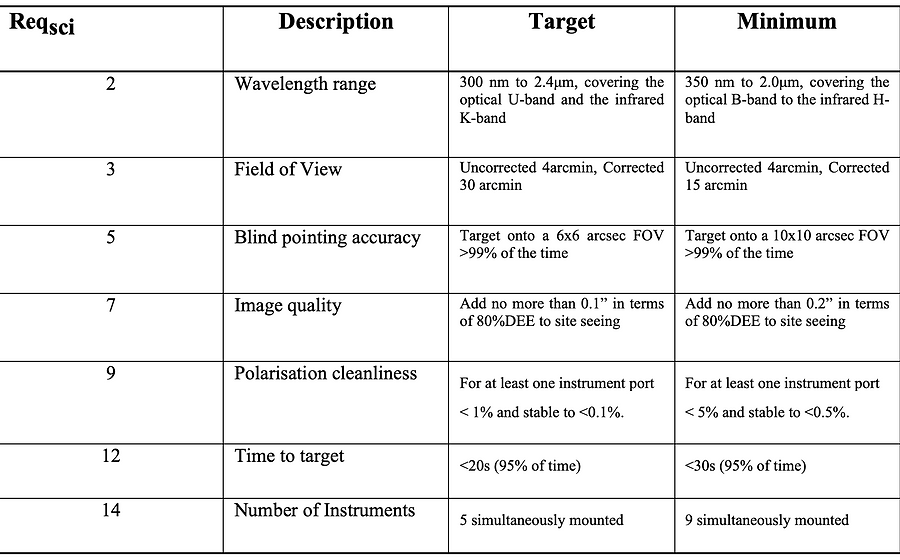
The first light instrumentation will likely be a set of low-cost, simple, high-throughput instruments designed to deliver the NRT science cases. The first light suite will consist of spectroscopic and photometric capabilities (e.g. NR-SPRAT and NR-IMAGER) as well as the transfer of two existing instruments from LT to NRT (NR-MOPTOP and NR-RAPTOR) to cover polarimetry and near-Infrared (NIR) imaging.

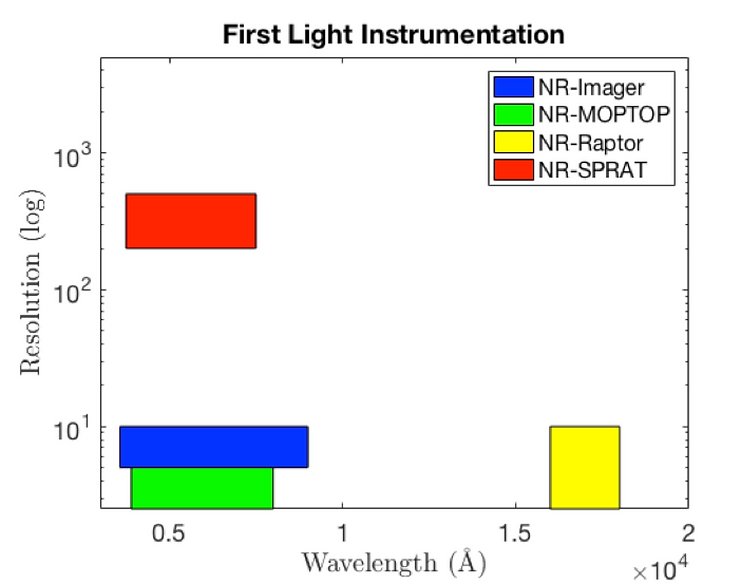
The proposed second generation of instrumentation is designed to complete the overall science requirements of the project. The major additions to the instrumentation suite are the introduction of a wide-field camera, a red, sensitive, imaging spectrograph, a medium-resolution, single-shot, broad-wavelength spectrograph and a full Stokes polarimeter, as summarised in the table and figure below:
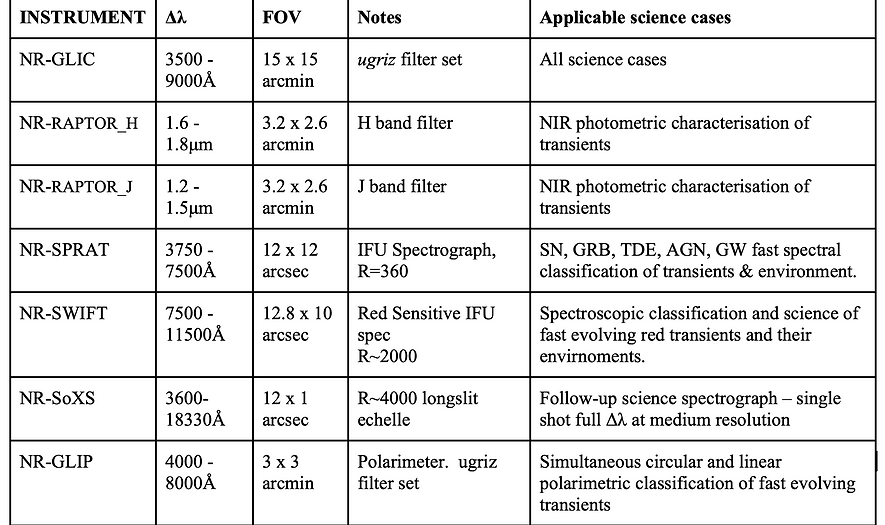
The prioritisation of certain instrumentation depends on changes to the funding landscape and science case motivation, however, the second generation instrument suite demonstrates the wide range of capabilities the NRT will have once full commissioning of the facility is complete.
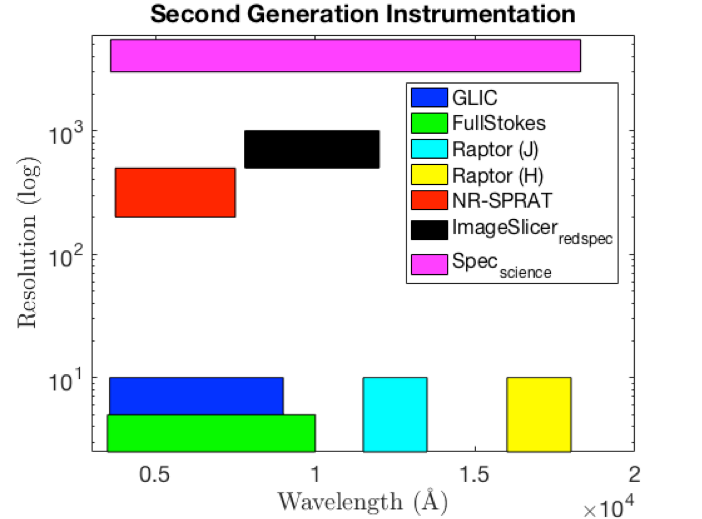
The NRT will also require non-science instrumentation which support observations. In particular the autoguider and Wavefront Sensor.
A wavefront sensor (WFS) measures the “flatness” of the image we obtain at the detector. By taking a “slice” of the beam of light, one can measure if some light is deviated. In our case, we are making sure that all 18 segments of the primary mirror are aligned to one another to make a primary mirror with the required overall curvature. If a segment is misaligned, the light that it sends would be deviated than if the mirror is aligned and we can detect this and correct it. The WFS will be mounted on the A&G box, fed by the fold mirror. The frequency of use will depend on how often the segments of the primary mirror are moving with external factor, or the amount of move.
The type of wavefront sensor we have is a Shack-Hartmann wavefront sensor. It comprises a collimating lens to convert the incoming light into a beam of parallel rays. This is then going through what is called a lenslet array. As it is mentioned in the name, this is an array of microlenses, 30 by 30, that will each focus the light at the same distance. By mapping the “slice” of the beam onto these microlenses, we can map the segments of the primary mirror, and a change in the position of the focused points instructs us on the amount of misalignment of segments, which we can then fix.
